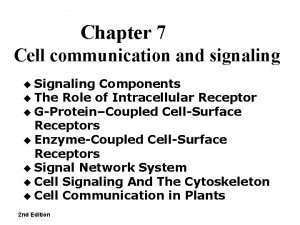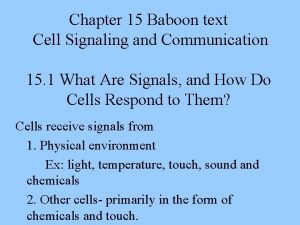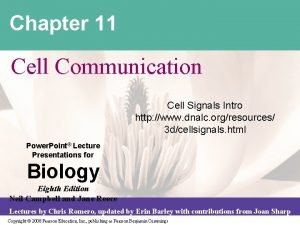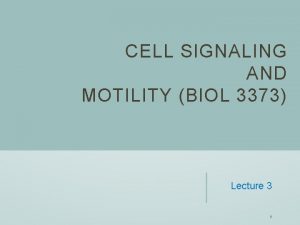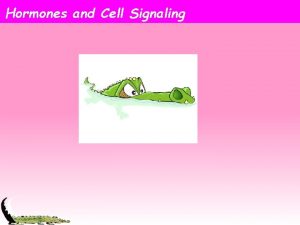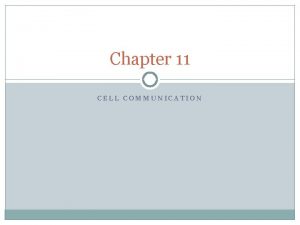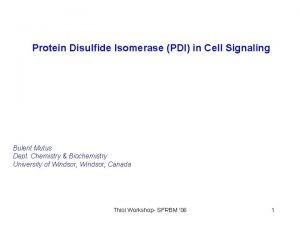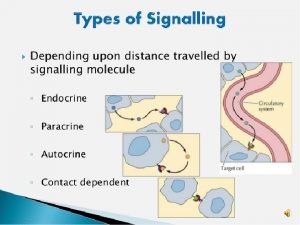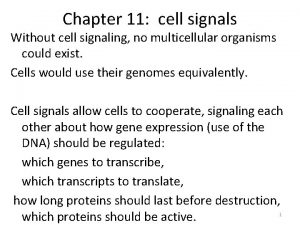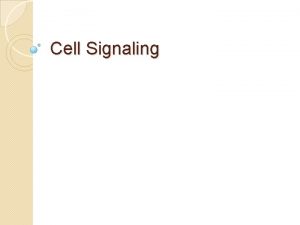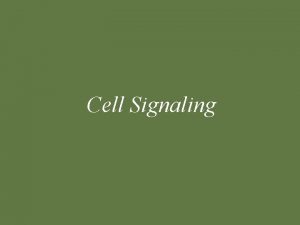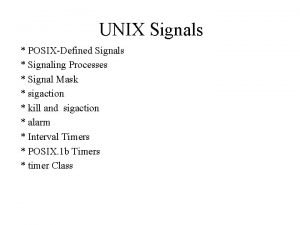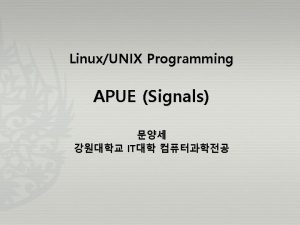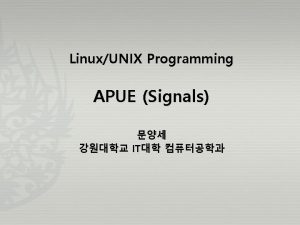A Cell Signals Chapter 11 Cell signaling has








- Slides: 8


A. Cell Signals Chapter 11 • Cell signaling has evolved over time • Communicating cells may be close together or far apart. • In paracrine signaling, one cell secretes the signal into extracellular fluid and the signal acts on a nearby target. • Examples of signals which act in a paracrine fashion are growth factors, -a group of factors which stimulate cells to divide and grow.

B. Three stages of cell signaling Chapter 11 • Signal reception- the signal binds to a specific cellular protein called a receptor, usually on the surface of the cell. • Signal transduction- the binding of signal changes the receptor in some way to change the shape. This causes a specific cellular response, usually in one or more steps. • Cellular response- The transduction system triggers a specific cellular activity, such as enzyme activation.

C. Cell Signaling Chapter 11 • It was found that epinephrine stimulates glycogen phosphorylase activity or glycogen breakdown, but this only happen during plasma membrane contact, and protein activation • A chemical signal binds to a receptor protein, causing the protein to change shape

D. G- Protein linked receptors Chapter 11 • 3 families of plasma membrane receptors. G-protein linked receptors, tyrosine kinase receptors, and ion channel receptors • G protein linked receptors, are single polypeptides that thread through the membrane- that bind to the nucleotide guanine. It influences blood vessel growth. • Tyrosine kinase receptors are activated by many growth factors. A signal molecule activates the creation of a dimer-2 signal molecules connect. This now allows cellular response. • Ion channel receptors are ligand gated ion channels or protein pores that allow or block ions- Na+, Ca+ by opening or closing. This helps control nerve impulses. • They are affected by steroids(progesterone, testosterone, estrogen)

E. Signal Transduction Chapter 11 • The transduction system does not physically pass along the signal molecule, rather the information is passed along. At each step of the process, the nature of the information is converted or transduced, into a different form. • Protein phosphorylation common mode of regulating signal transduction inside the cell. • Cyclic AMP (c. AMP) these are the 2 nd messengers, that are ion based and made from ATP. Ligands are the 1 st messengers. • c. AMP binds to and activates protein kinase A. • It propagate or pushes phosphorylation in proteins, to allow the movement of information.

F. Cellular response to Signals 11 Chapter • In response to a signal, a cell may regulate activities in the cytoplasm or transcription in the nucleus. Elaborate pathways amplify and specify the cell’s response to signals.

• Apoptoisis is programmed cell death. • The cell receives a signal that creates a cascade reaction to produce proteases- enzymes that break down proteins.
